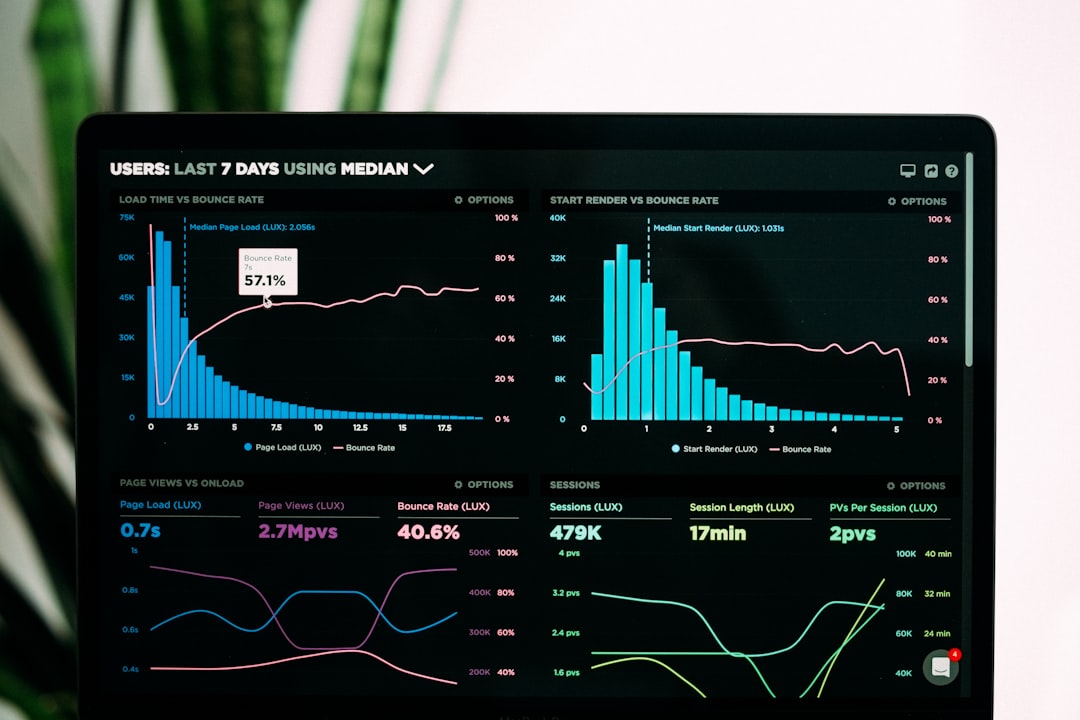Unlocking Business Insights with GA4 Analytics
GA4 analytics is the latest tool from Google designed to help businesses understand their website and app user behavior more effectively.
For quick information:
- GA4 offers user-centric data and advanced machine learning insights.
- It is privacy-focused, adhering to regulations like GDPR and CCPA.
- Works across multiple platforms, including web, Android, and iOS.
Why is GA4 analytics important? In today’s digital landscape, understanding user engagement can elevate your business strategy. With GA4, you can:
- Track user interactions more accurately through event-based tracking.
- Predict future actions of your website visitors using machine learning.
- Customize reports to create a data-driven approach tailored to your needs.
GA4 is a powerful ally for any business aiming to optimize their online presence and drive more local customers.
What is Google Analytics 4 (GA4)?
Google Analytics 4 (GA4) is the latest version of Google’s web analytics platform, designed to provide a more comprehensive and user-centric approach to tracking and analyzing traffic and engagement across various platforms, including websites and mobile apps. With its advanced features and intuitive interface, GA4 enables businesses to gain deeper insights into user behavior and enhance their marketing strategies. Moreover, mastering Google Analytics 4 basics is essential for marketers and analysts looking to leverage data effectively to drive decision-making. By focusing on key metrics and utilizing the platform’s powerful reporting tools, users can unlock the potential of their digital channels.
Definition
GA4 shifts from the traditional session-based data model to an event-based model. This means that every user interaction is tracked as an event, allowing for more detailed and flexible analysis. Whether it’s a page view, a button click, or a video play, each action can be tracked and analyzed independently.
Platforms
GA4 is built to work seamlessly across multiple platforms, such as:
- Websites
- Android Apps
- iOS Apps
By integrating data from different platforms into a single property, GA4 provides a unified view of user behavior, making it easier to understand and optimize the customer journey.
Traffic Measurement
GA4 offers advanced traffic measurement capabilities. Unlike its predecessor, Universal Analytics, which relied heavily on cookies and session-based tracking, GA4 uses event-based tracking. This method is more adaptable to modern privacy regulations and provides a clearer picture of user interactions.
- Automatically Collected Events: Basic interactions like first visits, page views, and scrolls are tracked automatically.
- Enhanced Measurement Events: Additional interactions such as outbound clicks and site searches can be tracked with minimal setup.
- Custom Events: Tailor the tracking to your specific needs by creating custom events for unique interactions.
Engagement
Engagement metrics are a key feature of GA4, offering deeper insights into how users interact with your content:
- Engagement Rate: The percentage of sessions that were actively engaged.
- Engaged Sessions: Sessions that lasted longer than 10 seconds, had a conversion, or included multiple page views.
- Engagement Time: Total time users spent actively engaging with your site or app.
These metrics help you understand the quality of user interactions, which is crucial for optimizing user experience and driving conversions.
Incorporating GA4 analytics into your business strategy can significantly enhance your understanding of user behavior and help you make data-driven decisions. Next, we’ll dive into the key features of GA4 and how they can benefit your business.
Key Features of GA4
Privacy and Data Protection
Google Analytics 4 (GA4) takes privacy and data protection seriously. With increasing concerns about data privacy, GA4 is designed to comply with global privacy regulations like GDPR and CCPA. It offers features like data anonymization and consent mode, ensuring that user data is collected and processed responsibly. This means you can trust GA4 to handle your data ethically, keeping your users’ privacy intact while still providing valuable insights.
Custom Reports
One of the standout features of GA4 is its ability to create custom reports. Unlike its predecessor, GA4 allows you to tailor reports to your specific business needs. You can choose the metrics and dimensions that matter most to you, making it easier to track performance and identify trends. The exploration feature in GA4 lets you dive deep into your data with various exploration types like Free Form, Funnel, Cohort, and Path Explorations. This flexibility helps you understand complex data in a more straightforward and actionable way.
User Behavior Analysis
Understanding how users interact with your site or app is crucial for optimizing user experience and driving conversions. GA4 excels in user behavior analysis by offering detailed insights into user interactions. You can track events like scrolls, clicks, video engagements, and more. The new Engagement Rate metric replaces the traditional bounce rate, providing a more comprehensive view of user interactions. This helps you see which parts of your site are engaging users and which areas need improvement.
Exploration Feature
The exploration feature in GA4 is a game-changer for data analysis. It allows you to create custom explorations to analyze user behaviors and journeys deeply. For instance, you can use Funnel Explorations to understand the steps users take before converting or Path Explorations to see the sequence of actions users take on your site. These explorations provide a more nuanced view of user behavior, helping you identify patterns and make data-driven decisions.
Predictive Analytics
GA4 leverages machine learning to offer predictive analytics, giving you insights into future user behavior. For example, it can predict the purchase probability of users who were active in the last 28 days and will convert within the next seven days. It can also forecast churn probability and predicted revenue, helping you make proactive decisions to enhance user retention and increase revenue. These predictive metrics are invaluable for planning marketing strategies and improving ROI.
Incorporating these features into your analytics strategy can provide a more detailed and actionable understanding of your users, leading to better business decisions. Next, we’ll explore the steps to set up GA4 for your business, ensuring you make the most of these powerful features.
Setting Up GA4 for Your Business
Setting up GA4 analytics for your business is crucial to understanding user behavior and making data-driven decisions. Here’s how to get started:
Account Setup
First, you need to create a Google Analytics account. If you don’t already have one, sign up for free here.
- Sign in with your Google account.
- Create an account by entering your account name.
- Set up a property by providing a name, reporting time zone, and currency.
Property Creation
A property in GA4 represents your website or app. Here’s how to create one:
- Navigate to Admin in your GA4 account.
- Under the Account column, select the desired account.
- In the Property column, click Create Property.
- Enter the property details and click Next.
Data Stream
A data stream is where data from your website or app flows into GA4. To set this up:
- Go to Admin and select your property.
- In the Property column, click Data Streams.
- Choose Web or App (iOS/Android) and follow the prompts to set up the stream.
Data Collection
Once your data stream is set up, you need to collect data. This involves tagging your website or app.
Setting Up Website Tagging
Use the Google Tag or Tag Manager to tag your website. This allows GA4 to track user interactions.
- Google Tag: Add the provided tracking code snippet to every page of your website.
- Tag Manager: If you use Google Tag Manager, create a new GA4 Configuration tag and set it to fire on all pages.
Measuring App Engagement
For app measurement, integrate the Firebase SDK with your app. This will help you track engagement metrics like user sessions, screen views, and in-app purchases.
- Add Firebase SDK to your app.
- Link your Firebase project to GA4.
- Enable app measurement to track user interactions.
Tracking Ecommerce
To track ecommerce activities, you need to set up purchase events. This will help you understand customer purchase behavior and product performance.
- Create a purchase event in GA4.
- Use the recommended event name “purchase” to track transactions.
- Add the event parameters like currency, value, and items to capture detailed purchase information.
By following these steps, you’ll have a robust GA4 analytics setup that provides valuable insights into user behavior across your website and app. This data is crucial for optimizing your digital strategy and driving business growth.
Next, we’ll delve into the important metrics in GA4 that you should be tracking to measure success.
Important Metrics in GA4
Understanding the right metrics is key to mastering GA4 analytics. Let’s break down the most important ones you’ll be tracking:
Average Engagement Time
Average engagement time measures how long users actively interact with your site or app. Unlike traditional metrics that just track how long a page is open, this metric focuses on real engagement. This helps you understand which pages or features are keeping your audience’s attention.
Bounce Rate
In GA4, the traditional bounce rate is replaced by the engagement rate. Engagement rate measures the percentage of sessions that included meaningful interactions, like clicks or scrolls. This gives a clearer picture of user involvement rather than just tracking single-page visits.
Session Conversion Rate
Session conversion rate is the percentage of sessions that result in a conversion event, like a purchase or form submission. This metric helps you see how effective your site is at converting visitors into customers.
Entrances and Exits
Entrances show where users start their sessions, while exits indicate where they leave. These metrics help you identify which pages are most effective at attracting users and which ones might be causing them to leave.
Views per User
Views per user tracks how many pages each user views on average during their session. This metric helps you understand user interest and navigation patterns on your site.
Engaged Sessions
An engaged session is a session that lasts longer than 10 seconds, has a conversion event, or has multiple page views. This metric offers a deeper look into how users interact with your site beyond just visiting a single page.
Engagement Rate
Engagement rate replaces the old bounce rate and measures the percentage of sessions that were engaged. This metric is crucial for understanding how well your content or features are performing in keeping users interested.
Returning Users
Returning users are those who come back to your site after their initial visit. Tracking this metric helps you gauge user loyalty and the effectiveness of your retention strategies.
By focusing on these metrics, you’ll gain a comprehensive understanding of user behavior and engagement on your site. This insight is critical for optimizing your digital strategy and improving user experience.
Next, we’ll explore the benefits of using GA4 for data analysis and how it can supercharge your business insights.
Benefits of Using GA4 for Data Analysis
Google Analytics 4 (GA4) offers several powerful features that can transform how you analyze data and make business decisions. Let’s dive into some key benefits:
Custom Reports
One of the standout features of GA4 is the ability to create custom reports. This allows you to tailor your data views to meet your specific business needs. You can filter, segment, and visualize data in ways that are most meaningful to you.
For example, you can create a report that tracks user interactions on a product landing page. This helps you see which elements drive engagement and which need improvement.
Customer Behavior Analysis
Understanding customer behavior is crucial for any business. GA4 uses event-based tracking to provide detailed insights into how users interact with your site or app. You can track events like page views, clicks, and purchases to get a clear picture of user behavior.
For instance, knowing that users are more likely to convert after watching a product video can help you optimize your content strategy.
Journey Analysis
GA4 excels in journey analysis, allowing you to map out the entire customer journey. This helps you understand how users move through your site or app, from the first visit to conversion.
You can identify drop-off points and optimize the user experience to improve conversion rates. For example, if you notice a high drop-off rate on the checkout page, you can investigate and resolve potential issues.
Data Exploration
The exploration feature in GA4 is a game-changer for data analysts. It offers a flexible, drag-and-drop interface to explore data in real-time. You can uncover hidden patterns and trends that standard reports might miss.
Imagine discovering that a particular user segment is more likely to engage with your blog posts. This insight can help you tailor your content to better meet the needs of that segment.
GA4’s advanced data analysis capabilities make it an essential tool for businesses looking to gain deeper insights and drive better decision-making.
Next, we’ll discuss how to transition from Universal Analytics to GA4 seamlessly.
How to Transition from Universal Analytics to GA4
Transitioning from Universal Analytics to GA4 analytics may seem daunting, but it’s essential for staying ahead. Here’s how you can make the switch smoothly.
Data Migration
First, it’s important to understand that data from Universal Analytics will not automatically transfer to GA4. You’ll need to set up GA4 to start collecting new data while still accessing historical data from Universal Analytics.
Steps to migrate:
1. Activate GA4: Log into your Google Analytics account, go to Admin, and under Property, click on GA4 setup assistance. Follow the prompts to create a new GA4 property.
2. Set Up Data Streams: Create data streams for your website and apps. This ensures that GA4 starts collecting data from all your digital platforms.
3. Export Historical Data: Use third-party services like Fivetran or Tableau to export and store your old Universal Analytics data. This data won’t be lost and can be used for future analysis.
Comparison Between Universal Analytics and GA4
GA4 offers several new features and improvements over Universal Analytics:
| Feature | Universal Analytics | GA4 |
|---|---|---|
| Data Model | Session-based | Event-based |
| Reporting | Predefined reports | Customizable and exploratory reports |
| Privacy | Limited privacy controls | Enhanced privacy features |
| Cross-Platform Tracking | Limited | Robust cross-platform tracking |
These differences mean GA4 is better suited for modern digital environments, offering more flexibility and deeper insights.
Additional App Traffic
If your business has a mobile app, GA4 simplifies tracking app engagement. It allows you to set up app data streams, making it easier to measure user interactions across web and app platforms.
Setting up app traffic tracking:
1. Add Data Stream: In your GA4 property, click on Data Streams and select Add Stream. Choose your platform (iOS or Android) and follow the setup instructions.
2. Measure Engagement: GA4 automatically tracks key app interactions like screen views, in-app purchases, and user engagement.
Pageview Metrics
In GA4, the way pageviews are tracked has evolved. It now focuses on events rather than sessions, providing a more detailed view of user interactions.
Key metrics include:
– Pageviews: Total number of pages viewed.
– Engaged Sessions: Sessions lasting longer than 10 seconds, having a conversion event, or multiple pageviews.
– Views Per User: Average number of pages viewed per user, giving insights into user engagement.
By understanding these metrics, you can better analyze user behavior and optimize your digital strategy.
Transitioning to GA4 might seem like a big step, but with the right approach, it can be a smooth process.
Next, we’ll explore how to automate your analytics with GA4.
Automating Your Analytics with GA4
Automation can save you time and make your GA4 analytics more efficient. GA4 offers several powerful APIs to help you manage your analytics at scale. Let’s dive into the key APIs:
Data API
The Data API allows you to run reports and export audiences. This means you can automate the process of gathering insights and sharing them with your team or stakeholders.
- Run Reports: Automatically generate reports on user behavior, traffic sources, and more.
- Export Audiences: Seamlessly move your audience data into other platforms for targeted marketing campaigns.
This API can help you keep your finger on the pulse of your business without manual data crunching.
Admin API
The Admin API is all about configuration. It allows you to manage your accounts, properties, and data streams programmatically.
- Configure Accounts: Set up and manage multiple Google Analytics accounts.
- Manage Properties: Create and edit properties to organize your data.
- Data Streams: Add or modify data streams to capture information from different platforms.
Using the Admin API, you can ensure your analytics setup is always up-to-date and aligned with your business needs.
Measurement Protocol
The Measurement Protocol lets you send events directly to GA4 from your servers. This is especially useful for tracking offline interactions.
- Server-to-Server Events: Capture data from backend systems and send it to GA4.
- Offline Interactions: Track events that happen offline, like in-store purchases or phone calls.
This protocol helps you get a complete picture of customer interactions, both online and offline.
User Deletion API
Privacy is crucial, and the User Deletion API helps you comply with data protection regulations. It allows you to delete data associated with a specific user identifier.
- Data Deletion Requests: Handle user requests to delete their data.
- Regulatory Compliance: Stay compliant with GDPR and other data protection laws.
By using this API, you can ensure your business respects user privacy and maintains trust.
By leveraging these APIs, you can automate your GA4 analytics and focus more on strategy and less on manual tasks. Next, let’s address some frequently asked questions about GA4 Analytics.
Frequently Asked Questions about GA4 Analytics
What is GA4 in Analytics?
Google Analytics 4 (GA4) is the latest version of Google’s analytics platform. It helps businesses measure traffic and user engagement across websites and apps. Unlike the old Universal Analytics, GA4 uses event-based tracking instead of session-based tracking. This means every interaction, like a page view or a button click, is considered an event.
GA4 supports multiple platforms, allowing you to collect data from web, Android, and iOS within a single property. This unified approach gives you a complete view of user behavior across different platforms.
Is GA4 replacing Google Analytics?
Yes, GA4 is replacing Universal Analytics. As of July 1, 2023, standard Universal Analytics properties stopped processing new data. Businesses now need to migrate to GA4 to continue tracking their data. For those using Universal Analytics 360, there is an extension until July 1, 2024.
GA4 brings a host of new features and improvements. It offers better data access and integrates seamlessly with other Google products. This makes it essential for businesses to transition to GA4 to stay updated with the latest analytics capabilities.
What is special about GA4?
GA4 brings several unique features to the table:
- Event-Based Tracking: Unlike Universal Analytics, GA4 tracks interactions as events. This includes user scrolls, searches, clicks, link-follows, and video engagements.
- Enhanced Measurement: GA4 automatically collects essential events like first visits, page views, and scrolls. You can also enable more advanced tracking for outbound clicks and site searches.
- Custom Audience Creation: Create custom audiences based on user behavior and pull them directly into your ad campaigns. This helps in precise targeting and better campaign performance.
- Predictive Metrics: GA4 offers predictive metrics like “likely 7-day purchasers,” helping you identify users who are more likely to convert.
- Cross-Platform Data: Collect data from multiple platforms (web, Android, iOS) within a single property. This gives you a comprehensive view of user behavior.
- Privacy-Centric: GA4 is designed with privacy in mind, helping you comply with data protection laws like GDPR.
By leveraging these features, GA4 allows businesses to gain deeper insights into their user behavior and optimize their digital strategies more effectively.
Next, let’s dive into the key metrics you should focus on in GA4.
Conclusion
In summary, Google Analytics 4 (GA4) offers a powerful suite of tools to help businesses gain actionable insights into user behavior. With features like cross-platform data collection, privacy-centric design, and advanced event tracking, GA4 enables you to understand and optimize your digital strategies more effectively.
At D&D SEO Services, we specialize in tailoring GA4 setups to meet the unique needs of your business. Our personalized strategies ensure that local businesses not only gain visibility but also engage effectively with their target markets.
By integrating cutting-edge tools like GA4, we help create a distinctive digital narrative for your business. This approach fosters a robust online ecosystem, facilitating growth and sustained customer relationships.
Ready to elevate your business with GA4? Contact us today to learn how we can enhance your local SEO strategy and drive business growth.








